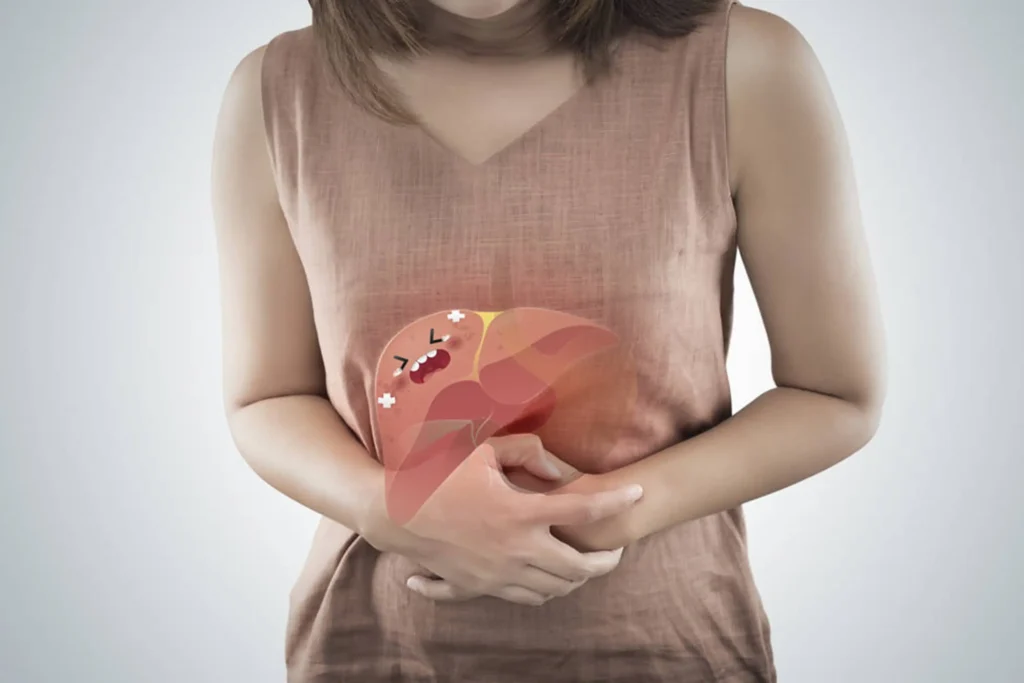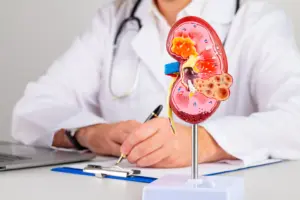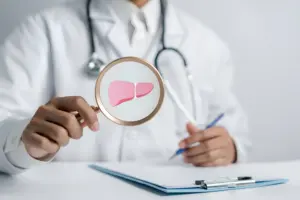
Fatty Liver Disease: Your liver, the body’s second-largest organ, performs hundreds of vital functions daily. When fat accumulates in liver cells, however, it develops a condition called fatty liver disease. This increasingly common health issue affects nearly 25% of adults worldwide, yet many remain unaware they have it until significant damage occurs.
Types of Fatty Liver Disease
Fatty liver disease is divided into two main categories:
Non-alcoholic Fatty Liver Disease (NAFLD) develops in people who drink little to no alcohol. NAFLD ranges from simple fatty liver (steatosis) to the more severe non-alcoholic steatohepatitis (NASH), which causes inflammation and liver cell damage. Without intervention, NASH progresses to scarring (fibrosis), advanced scarring (cirrhosis), and potentially liver failure.
Alcoholic Fatty Liver Disease (AFLD) results from excessive alcohol consumption that overwhelms the liver’s ability to process and break down fats. The liver prioritises metabolising alcohol over other substances, leading to fat accumulation in liver cells.
Also Read | Can fatty liver lead to diabetes and heart disease? Here’s the truth
Fatty Liver Disease Symptoms
Early-stage fatty liver disease rarely shows symptoms, earning it the nickname “silent liver disease.” As the condition advances, you may experience:
- Fatigue and weakness
- Pain or discomfort in the upper right abdomen
- Unexplained weight loss
- Yellowing of skin and eyes (jaundice)
- Swelling in the abdomen and legs
- Spider-like blood vessels on the skin
- Enlarged spleen
The absence of early symptoms makes regular check-ups essential, especially if you have risk factors.

Common Causes and Risk Factors of Fatty Liver Disease
Several factors increase your risk of developing fatty liver disease:
For NAFLD:
- Obesity, particularly excess abdominal fat
- Insulin resistance or type 2 diabetes
- High blood cholesterol and triglycerides
- Metabolic syndrome
- Polycystic ovary syndrome
- Sleep apnea
- Underactive thyroid or pituitary gland
For AFLD:
- Consuming more than 14 drinks weekly for men or 7 drinks for women
- Binge drinking patterns
- Genetic predisposition to alcohol processing problems
Diagnosis Process of Fatty Liver Disease
Doctors diagnose fatty liver disease through multiple methods:
- Blood tests to evaluate liver enzymes and function
- Imaging studies like ultrasound, CT scan, or MRI
- FibroScan, which measures liver stiffness
- Liver biopsy for definitive diagnosis in complex cases
Also Read | Non-Alcoholic Fatty Liver Disease: Millions of Indians Affected by Silent Epidemic
Fatty Liver Disease Treatment Approaches
No specific medications directly treat fatty liver disease, but lifestyle modifications prove highly effective:
- Weight loss of 3-5% of body weight improves simple fatty liver; 7-10% weight loss benefits NASH
- Regular physical activity (150+ minutes weekly)
- Balanced diet emphasising fruits, vegetables, whole grains, and healthy fats
- Avoiding alcohol completely for AFLD patients
- Managing diabetes, cholesterol, and other underlying conditions
For those with advanced disease, liver transplantation may become necessary.
Early detection and proactive lifestyle changes give your liver the best chance to heal. Speak with your healthcare provider about liver health screening if you have risk factors for fatty liver disease.








